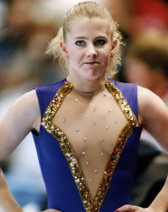March, 2014
Winners and Lugers
By Michael J. Katin, MD
On February 23, closing ceremonies were held for the 2014 Winter Olympics, finishing up 16 days of memorable and record-setting performances in multiple sports and pseudo-sports, as well as proving that President Vladimir Putin and his associates were able to successfully produce a terrorist-free international event in a subtropical resort area (2026 Miami Winter Olympics? Maybe.). Even PETA and the demands of essential bodily functions were not able to deter this effort. It is obvious that the huge amounts of money invested in Russia to allow televising of these events will be put to use for further peaceful and humanitarian improvements.
The events schedule for the 22nd Winter Olympics differed markedly from that of the first Winter Olympics in 1924. That year there were 16 events over 10 days, as opposed to 98 events in 2014. The 22nd Winter Olympics included 12 events never before included in Winter Olympic competition. Fortunately, the most revered winter sports event of them all has continued to be included from 1924 through today.
This also demonstrates that tradition isn't what it used to be. Expanding the range of competition would tend to make the logistics of carrying out this spectacle more complicated and theoretically could decrease interest in any one specific event but could, in exchange, increase attendance and television revenue. Apparently there was substantial controversy about including certain events, but in the end if appears everything worked out relatively well.
This progress (or deterioration, depending on your point of view) exists, of course, in many other areas as well. This is not an example of evolution, since negotiations and influence-trading enter into the final decisions for what is accepted and what is rejected, both in the Olympics and in, for example, medical therapies. In radiation oncology, certain techniques have lost or failed to gain support as others have gained momentum . It almost seems that, as with athletics, there are instances in which acceptance has varied, sometimes for no obvious reason.
This is only a partial list indicating increasing support or decreasing likelihood to become or remain part of the Winter Olympics and the Radiation Oncology armamentarium:
Increasing Attention:
Ice Hockey Fighting Adaptive Radiation Therapy Snowmobile Skimming Carbon Ion Therapy Full Contact Ice Dancing Electromagnetic Navigation Bronchoscopic Brachytherapy Team Snowball Antibody-Radionuclide Conjugates to Treat Solid Tumors Molecular Profiling to Determine Radiation Sensitivity Ice Walking Diminishing Support or Already Deleted
Ski Joring Military patrol Hyperthermia Ski Ballet Strontium-89 Chloride Speed Skiing Ifosfamide Bandy (yes, there's a sport called Bandy!) Neutron Therapy C. parvum sensitization And the two most likely to be eliminated by 2018:
Doubles Luge Fee-for-Service
